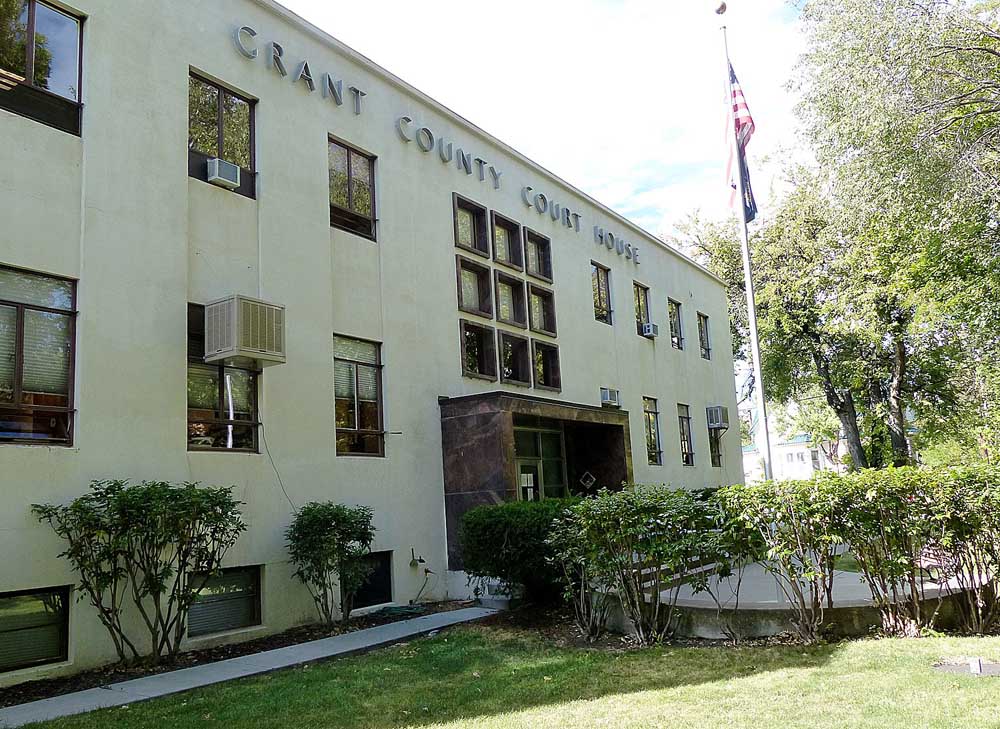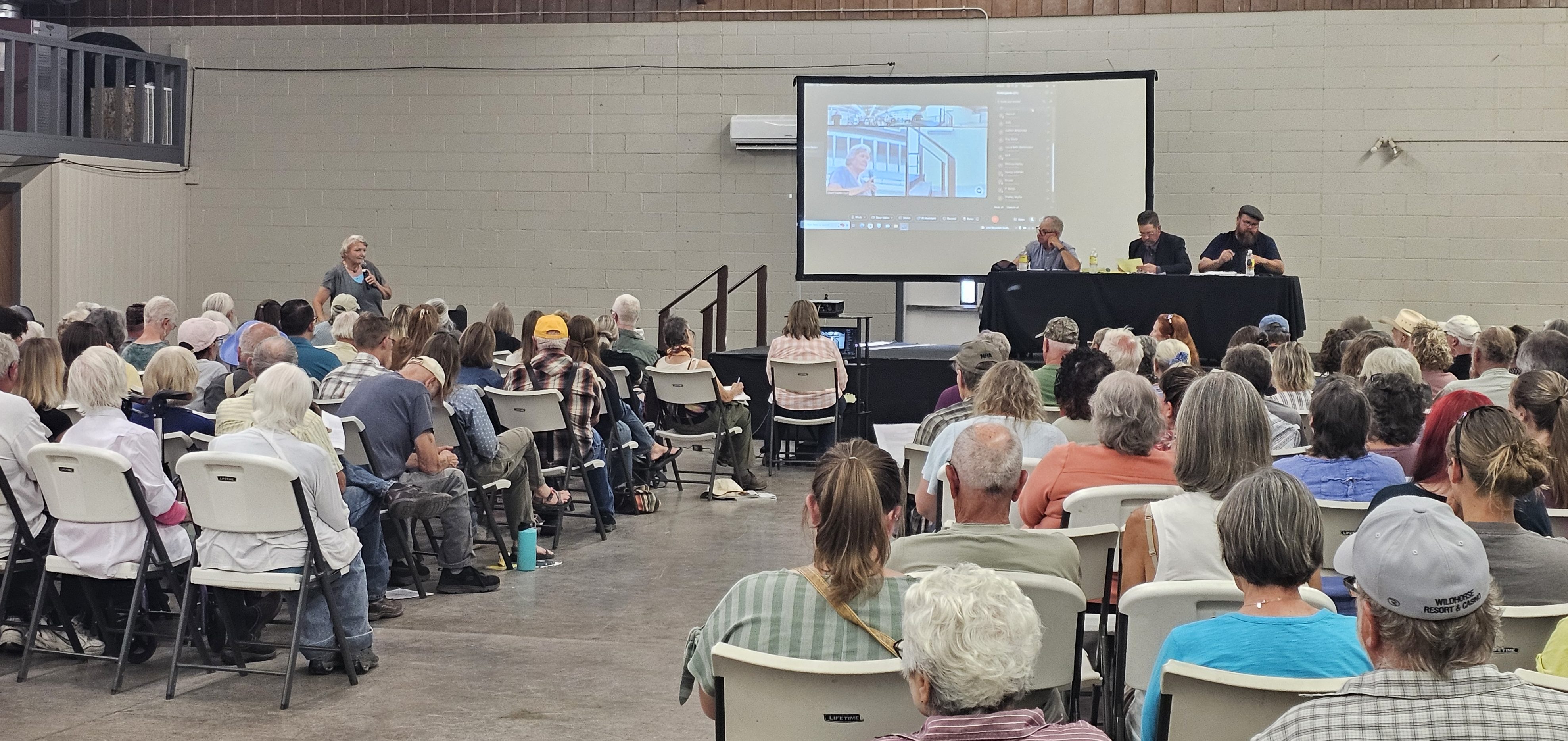1864: Residents Carve Out a County ‘Making life better for themselves and their neighbors’
Published 9:06 am Wednesday, September 24, 2014

- Canyon City has always been the county seat for Grant County. The current Courthouse was built in 1952 when O.L. Dickens was county judge and Dick Schouten and John M. Damon were the commissioners.
CANYON CITY – Grant County was created 150 years ago, but it wasn’t the first county government to apply to this area.
Trending
The county was carved out of the original Wasco County, which covered Eastern Oregon as settlers flowed into the West.
A 2006 report by Ken Tollenar, former Association of Oregon Counties director, describes early government in provisional and territorial days as “relatively simple.”
“The early counties were responsible for law enforcement and jails, maintenance of property records, minor judicial functions, establishment and maintenance of roads, and little else. Taxation was sort of catch-as-catch-can, and much of the road work was done by settlers themselves,” he wrote.
Trending
The provisional government created the offices of county treasurer in 1843, sheriff and assessor in 1845, clerk in 1846, and coroner in 1847. Also in 1843, three-man bodies known as county courts were assigned probate and “county commissioner” duties, Tollenar’s report notes.
Duties, assignments and jurisdictions firmed up with statehood in 1959, and more counties were carved out of the vast Wasco region.
Just as Wasco begat Grant in 1864, Grant later begat Harney County.
The “History of Grant County Oregon,” a book found at the Grant County Library, describes the events.
“By the 1880s, the population in the Harney Basin was beginning to grow, and the people there felt very removed from the county seat in Canyon City. In 1889, Harney County was created out of the south half of Grant County.”
The history tome notes that the Grant County seat has always been Canyon City, but not without a challenge in the late 1880s.
After the gold rush, as Canyon City’s population waned, folks in Long Creek decided their town would be a better site for the county government. Their population was growing, and the town was an agricultural center.
As such, it seemed to them a better option than a declining mining town.
“History of Grant County” cites cost as the deciding factor.
“It became obvious that the cost to rebuild the courthouse was beyond the means of the county’s treasury and the seat remained in Canyon City, where it has been to this day.”
Local history buffs may want to peruse the “History of Grant County” in the library’s Oregon Room. The book, edited by rancher Jack Southworth, notes that material was drawn from various academic sources as well as the Oliver Historical Museum, and it includes a wealth of firsthand articles submitted by and about local families that settled the county.
As the book puts it:
“It would be wrong to think that the history of this county was painted in broad strokes by a long array of colorful people who always felt that their actions were ones of greatness. Rather, our history was made by hardworking people who were simply trying to make their everyday lives a little better, for themselves and for their neighbors.”
Here are just a few of the significant points in Grant County’s early history:
1862 – B.C. Trowbridge takes out first homestead claim in what would become Grant County.
1862 – Gold is discovered!
1863 – Canyon City town site is laid out, home to some 1,500 people drawn by the lure of gold.
1864 – The road from Canyon City to The Dalles opens.
– Grant County forms out of Wasco.
– Gold is discovered at Susanville, Prairie Diggin’s, and then Dixie Creek.
– The county’s first school district forms: District No. 1 – Canyon City, with a schoolhouse on Rebel Hill.
1866 – C.H. “Joaquin” Miller is elected the first county judge, and later is known as the poet of the Sierras.
1870 – The county courthouse is destroyed by fire.
– Chinese population, linked to the mining era, booms to about 940.
1878 – The Bannock Indian wars spread, including a deadly foray into the Murderers Creek area and north to Long Creek and Battle Mountain.
1884 – Dr. Thomas Condon finds discovers fossilized remains of two varieties of extinct horse along the South Fork John Day River.
1885 – The Chinatown area on the edge of Canyon City burns down. Barred from rebuilding there, most of the Chines move north to John Day.
1887 – Doc Hay arrives in John Day at age 25, and soon partners with Lung On in the successful Kam Wah Chung store and shrine.
1895 – The county’s first telephone company forms.
1898 – A fire rages through the hotel and other buildings in Canyon City.
Source: “History of Grant County, Oregon” at the Grant County Library.









